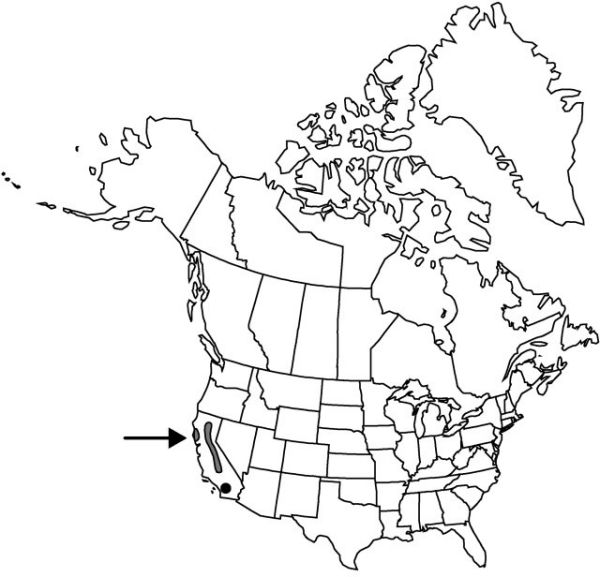Difference between revisions of "Calochortus superbus"
Leafl. W. Bot. 1: 11. 1932.
FNA>Volume Importer |
FNA>Volume Importer |
||
| Line 49: | Line 49: | ||
|publication year=1932 | |publication year=1932 | ||
|special status= | |special status= | ||
| − | |source xml=https://jpend@bitbucket.org/aafc-mbb/fna-data-curation.git/src/ | + | |source xml=https://jpend@bitbucket.org/aafc-mbb/fna-data-curation.git/src/8f726806613d60c220dc4493de13607dd3150896/coarse_grained_fna_xml/V26/V26_192.xml |
|genus=Calochortus | |genus=Calochortus | ||
|species=Calochortus superbus | |species=Calochortus superbus | ||
Revision as of 17:42, 18 September 2019
Plants bulbose; bulb coat membranous. Stems 4–6 dm. Leaves: basal withering, 2–3 dm; blade linear. Inflorescences subumbellate, 1–3-flowered; bracts 2–8 cm. Flowers erect; perianth open, campanulate, each member with median brown or purple blotch surrounded by bright yellow zone; sepals lanceolate, attenuate, 2–4 cm; petals white to yellowish or lavender, usually streaked with purple toward base, obovate to cuneate, rounded, 2–4 cm, with a few short hairs near gland, apex retuse to obtuse; glands linear, strongly chevron-shaped to weakly lunate, not depressed, densely covered with short hairs; filaments 7–9 mm; anthers lanceolate-linear to oblong, 8–10 mm, apex acute to obtuse. Capsules erect, linear, angled, 5–6 cm, apex acute. 2n = 12, 14, 20, 26.
Phenology: Flowering late spring–mid summer.
Habitat: Open slopes, dry meadows or wooded places in valley grassland, foothill woodland, pine forest
Elevation: 0–1700 m
Discussion
Selected References
None.

